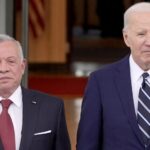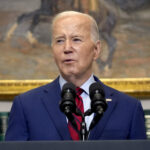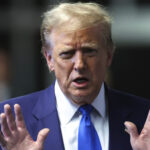Now with regular new virus cases on the rise, Jerome Powell’s outlook for the U.S. economy is changing. Consumers were just starting to come back from the pandemic lockdowns and mandates, but the economy may be thrown back by months. The Associated Press has the story:
Earlier this summer hopes were with virus infections on the decline, the Federal Reserve could start pulling back
WASHINGTON (AP) — Not long ago, anticipation was high that Federal Reserve Chair Jerome Powell might begin to sketch out a plan this week for the Fed to start pulling back on its support for an economy that has been steadily strengthening.
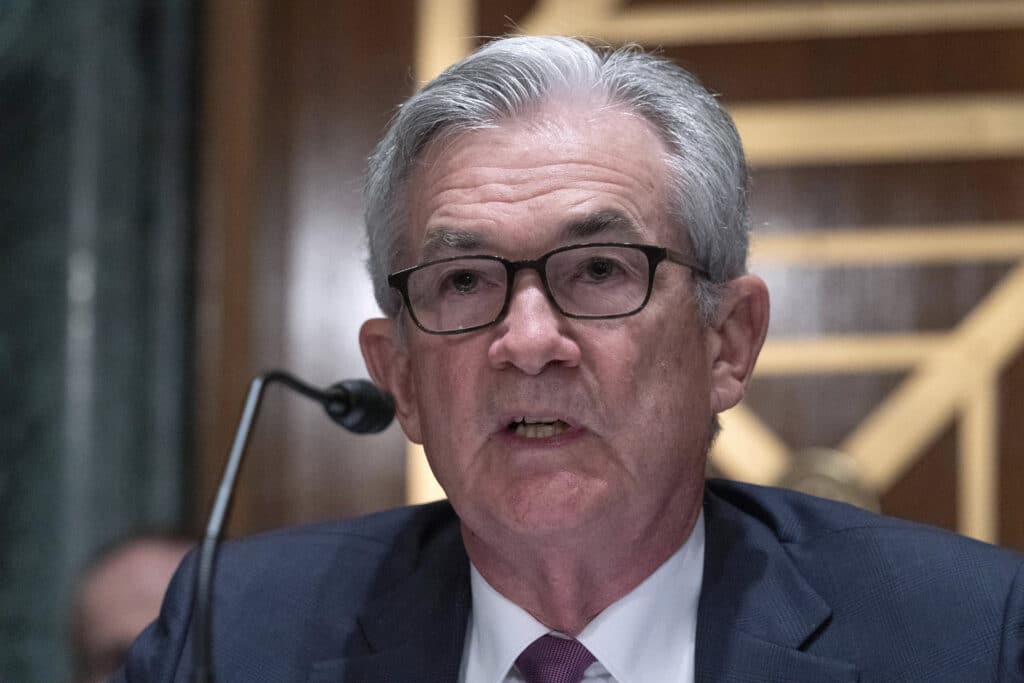
That was before COVID-19 cases began accelerating across the country. Now, the decision of how and when the Fed should begin dialing back its help for the economy has become a more complicated one.
Yet in outlining his view of the economy and the threats it faces in a high-profile speech Friday, Powell may provide important clues to the timing of changes in the Fed’s ultra-low-interest rate policies.
The big question has been when the Fed will begin to slow its purchases of Treasury and mortgage bonds. The Fed has been buying $120 billion in bonds each month since the pandemic erupted in March 2020 to try to keep longer-term rates low and encourage borrowing and spending. It has also pegged its short-term benchmark interest rate at nearly zero since then.
Powell will be speaking Friday at an annual conference of academics and central bankers. The conference, sponsored by the Federal Reserve Bank of Kansas City and normally held in Jackson Hole, Wyoming, will instead be a virtual-only event for a second straight year. A surge of COVID-19 cases near the Wyoming resort delivered a direct impact on the Fed itself by forcing a last-minute cancellation of its in-person plans.
The hasty shift to an online event reflects the rapid rebound of the pandemic, led by the delta variant, particularly in the South and Northwest. It follows a sharp decline in confirmed cases earlier in the summer that had raised hopes that the coronavirus and its economic impact might be fading.
Just a few weeks ago, many Fed officials were signaling that the economy was making solid progress toward the central bank’s twin goals of maximum employment and annual inflation at just above 2% for a sustained period. Several presidents of regional Federal Reserve Banks said they wanted to announce a reduction, or taper, of the bond purchases at the Fed’s next meeting in September.
Yet some economists have been slashing their forecasts for economic growth in the current July-September quarter. Restaurant traffic has declined slightly. Last week, Powell said it wasn’t yet clear what the delta strain’s impact on the economy would be. But he emphasized that the pandemic was far from over and was still “casting a shadow on economic activity.”
With the economic picture hazier now, economists will be listening carefully for clues Powell may provide about the Fed’s intentions.
“I’ll be watching how he characterizes current conditions and the outlook he has for the economy,” said Ellen Gaske, an economist at PGIM Fixed Income. “That will give us a sense of how soon the tapering will occur.”
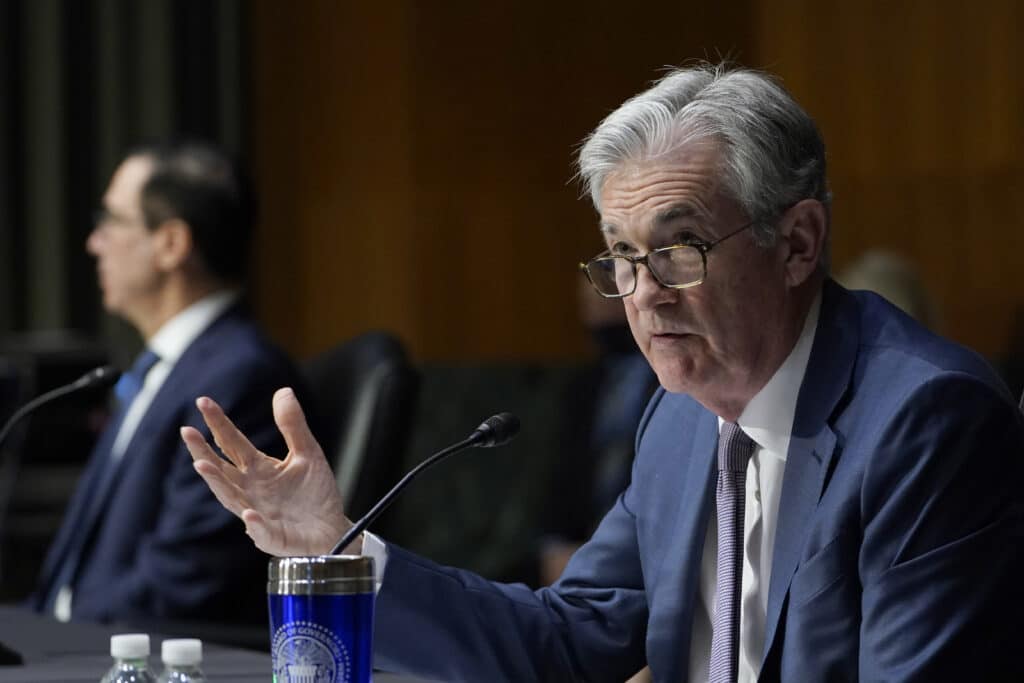
The uncertainties raised by the delta variant make it likelier that the Fed will announce a tapering in November or later, economists said, rather than in September. That would allow Fed officials to consider two additional months of data on inflation and jobs to gauge the delta variant’s impact.
The resurgence of the virus is hardly the only complicating factor facing the Fed. Inflation has surged to a three-decade high as a sharp rebound in consumer spending and shortages in many commodities and parts, such as semiconductors, have sent prices rising for airline tickets, hotel rooms, new and used cars and restaurant meals. The Fed’s preferred inflation gauge jumped 3.5% in June compared with a year earlier, the biggest such rise since 1991.
Higher inflation has, in turn, intensified pressure on Powell and the Fed to rein in their stimulus policies. Powell, though, has consistently expressed confidence that higher inflation will prove temporary, even if it persists for several more months. Many economists and Wall Street investors agree. Some, in fact, are more concerned about the opposite problem: That inflation will decline too far from its current level.
At the same time, growth could slow. Government stimulus is set to fade next year. No more stimulus checks are in the pipeline, and a $300-a-week federal unemployment supplement is set to expire in two weeks. Gaske noted that the price jumps have caused consumers to reduce their spending on things like cars and furniture, which over time reduces inflation pressures.
That’s in contrast to the late 1970s, the last time the United States faced rapid inflation, when rising prices encouraged a “buy it while you can” mentality, Gaske said. Ongoing spending at that time drove costs even higher.
As a result, any pullback in the Fed’s low-rate policies could help pull inflation below its 2% annual target in a year or two.
It’s also getting harder for the Fed to define its other policy goal of “maximum employment.” Initially Powell and other officials, including Vice Chair Richard Clarida, defined it as a “broad and inclusive” goal that included sharply reducing unemployment for Black Americans and Latinos and restoring the job market to its pre-pandemic health.
Yet the number of older Americans who are retiring has accelerated since the pandemic struck, and it’s far from clear that low interest rates would induce many of them to return to work. A smaller workforce could make it harder to restore the job market to pre-pandemic levels.
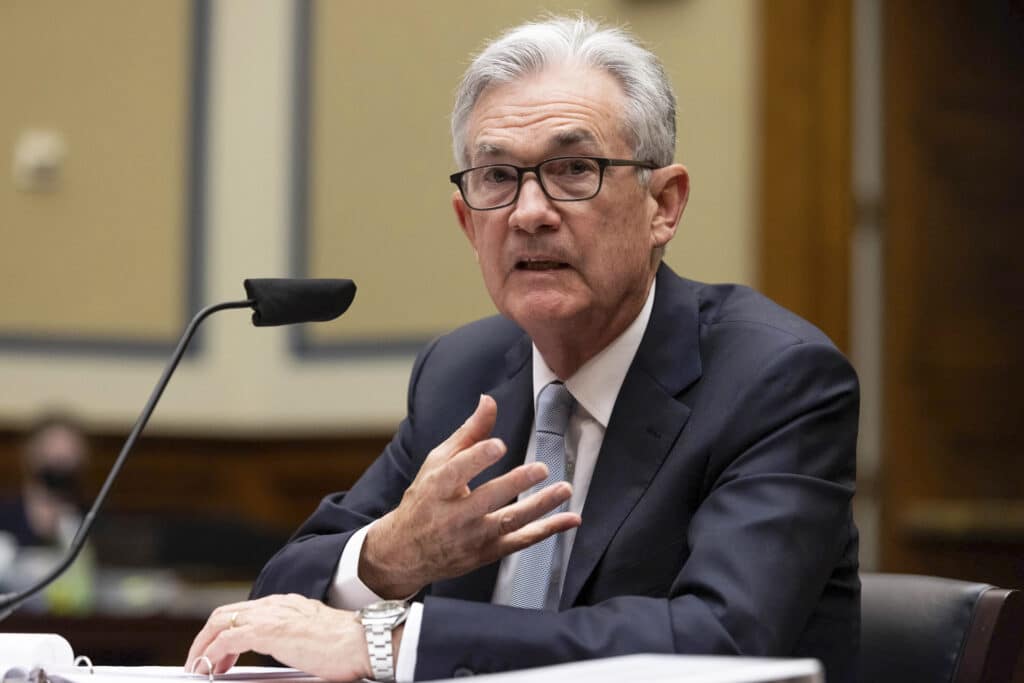
Many economists were surprised by remarks from Clarida this month suggesting that a return to an unemployment rate of 3.8% would meet the Fed’s goal of maximum employment and justify a rate hike by the end of 2022, earlier than Fed officials had projected in June.
Even if the jobless rate falls that low — it is now 5.4% — millions of Americans could remain on the sidelines, no longer looking for work and therefore not counted as unemployed. Black and Latino Americans would likely have much higher unemployment rates. Fed officials had previously made clear that they would take those concerns into account, but Clarida did not mention them.
“They’ve certainly not reinforced their commitment to broad and inclusive gains,” Adam Posen, president of the Peterson Institute for International Economics, said on a conference call with reporters. “They could have stuck with it much more than they did.”
Fed officials had expected much more clarity around the economy and job market by early fall. As the pandemic faded, more Americans would return to work, instead of shying away out of fear of viral infection. Now the delta variant could prolong that fear and postpone the point at which the Fed can get a clear read on the job market.
“It’s really hard for Powell to signal much here,” said William English, a former senior official at the Fed and now a finance professor at the Yale School of Management. “They’re in a world with a lot of uncertainty.”
By CHRISTOPHER RUGABER

